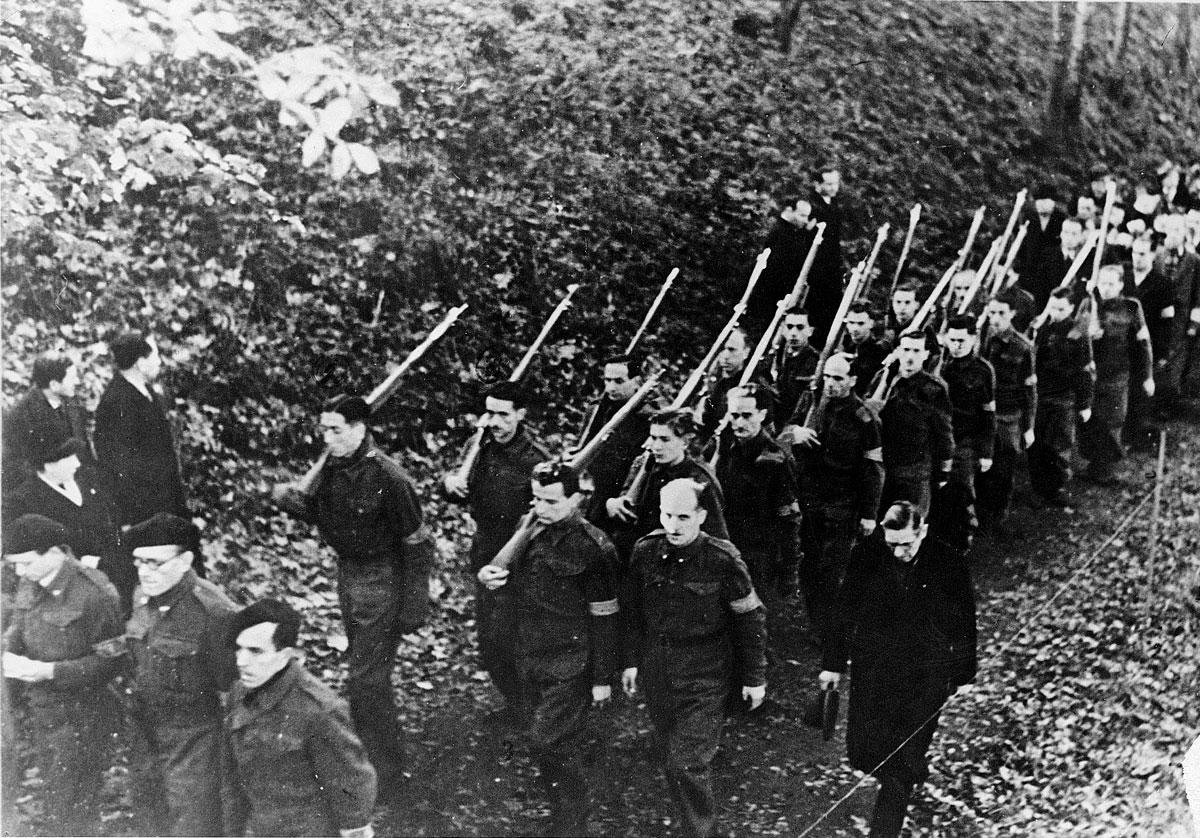Jewish underground fighters in Belgium after the liberation of Brussels, marching to the graves of their comrades who were executed by the Germans. Amongst the marchers: M. Katzap (first from the left), Z. Zilberstein-Zizi (second row, first from the left), and Michelle Rodzinski-Roni (third row, first from the left), as well as representatives of the Belgian Underground, led by commander Robert De Stelle.
Belgian Jews were active in the underground and in rescue activities. They were highly influential in the spy networks and communist resistance movements. Jews were also active in the various resistance movements. They published underground newspapers and established a joint Jewish underground organization for the defense of Jews- the Comité De Defénse Des Juifs (CDJ), which had connections with all of the major underground movements. The organization, dealing primarily with rescuing Jews, also made contacts with church and secular leaders and raised funds.
The Belgian anti-German underground, part of which was connected with the Comité, attacked the German database on the Jews, as well as Robert Holzinger, the chief official responsible for sending deportation orders. Additionally, they attacked a transport of Jews deported from the Malines transit camp for Auschwitz in April 1943. This daring raid was the sole attack in all of Europe against a deportation train bringing Jews to the death camps.
Belgium was occupied by the Germans in May 1940, and was liberated by the Western Allies between September 1944 and January 1945. Approximately 44% of the 66,000 Jews living there were murdered during the Holocaust. The Jewish initiatives are generally seen as a central factor in the efforts that saved a large portion of Belgian Jewry.
Yad Vashem Photo Archives 124AO1







